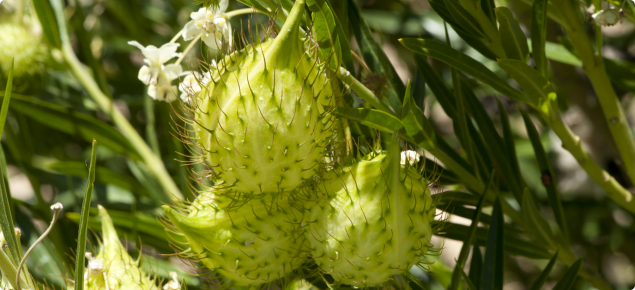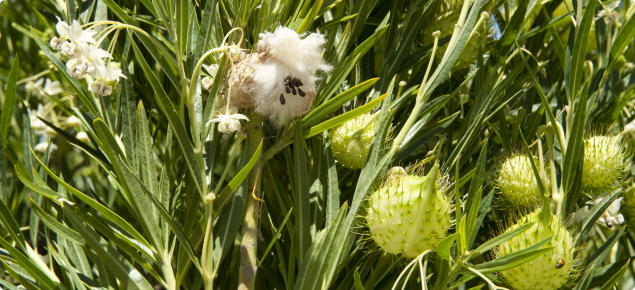Information about this pest can be found on the narrow leaf cotton bush: declared pest page.
Login or set up a new account on DAFWAs online training site to access:
- a training course on how to identify cotton bush and report it.
- training material that you can use to teach community groups how to identify cotton bush.
Chemical requirements
When using any agricultural chemicals please ensure that you always follow instructions on the label and any permit. Users of agricultural chemical products must always strictly comply with the directions on the label and the conditions of any permit. To view permits or product labels go to the Australian Pesticides and Veterinary Medicines Authority website.
Control options
Chemical control options can be found below. For other methods of control please refer to the narrow leaf cotton bush: what you should know page.
Chemical control options
The recommended herbicides for controlling narrow leaf cotton bush are glyphosate and triclopyr. Spraying is carried out when plants are actively growing, usually from spring to December.
| Herbicide: Glyphosate (Group M) (various trade names: see APVMA link) | |
|---|---|
| Active ingredient | 100, 360, 450, 470-480, 490, 500, 517, 540, 570g/L; 680, 700, 840 and 875g/kg glyphosate |
| Rate of product/ha | 1:100 for 360 g/L formulation |
| Rate of product/10L water |
Adjust rates for other formulations of glyphosate |
| Rate of product/ha | Not recommended |
| Wetting agent | Wetting agent and/or summer spraying oil may be beneficial |
| Time of application | Cotton bush can be sprayed at any time when actively growing: September-December is the most effective time to spray before fruit forms. |
| Remarks |
|
| Triclopyr (Group I) (various trade names: see APVMA link) | |
|---|---|
| Active ingredient | 600g/L triclopyr. A 755g/L formulation also available. |
| Rate of product/10L water | 30mL |
| Wetting agent | Use crop-oil such as Uptake® @ 500 mL 100 L, or DC-Trate @ 1L/100L |
| Time of application | Spring-December |
| Remarks |
|




